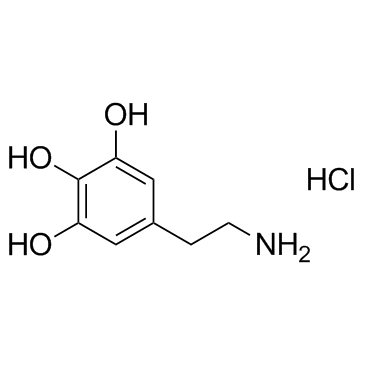Protective effects of green tea polyphenols and their major component, (-)-epigallocatechin-3-gallate (EGCG), on 6-hydroxydopamine-induced apoptosis in PC12 cells.
Guangjun Nie, Yuanlin Cao, Baolu Zhao
Index: Redox Rep. 7(3) , 171-7, (2002)
Full Text: HTML
Abstract
Green tea polyphenols exert a wide range of biochemical and pharmacological effects, and have been shown to possess antimutagenic and anticarcinogenic properties. Oxidative stress is involved in the pathogenesis of Parkinson's disease. However, although green tea polyphenols may be expected to inhibit the progression of Parkinson's disease on the basis of their known antioxidant activity, this has not previously been established. In the present study, we evaluated the neuroprotective effects of green tea polyphenols in the Parkinson's disease pathological cell model. The results show that the natural antioxidants have significant inhibitory effects against apoptosis induced by oxidative stress. 6-Hydroxydopamine (6-OHDA)-induced apoptosis in catecholaminergic PC12 cells was chosen as the in vitro model of Parkinson's disease in our study. Apoptotic characteristics of PC12 cells were assessed by MTT assay, flow cytometry, fluorescence microscopy and DNA fragmentation. Green tea polyphenols and their major component, EGCG at a concentration of 200 microM, exert significant protective effects against 6-OHDA-induced PC12 cell apoptosis. EGCG is more effective than the mixture of green tea polyphenols. The antioxidant function of green tea polyphenols may account for this neuroprotective effect. The present study supports the notion that green tea polyphenols have the potential to be effective as neuropreventive agents for the treatment of neurodegenerative diseases.
Related Compounds
| Structure | Name/CAS No. | Molecular Formula | Articles |
|---|---|---|---|
 |
5-Hydroxydopamine hydrochloride
CAS:5720-26-3 |
C8H12ClNO3 |
|
A microdialysis study on striatal dopamine, 5-HT and metabol...
1993-10-25 [Neuroreport 5(1) , 53-6, (1993)] |
|
Biochemical and behavioral recovery in a rodent model of Par...
1992-02-01 [Exp. Neurol. 115(2) , 193-9, (1992)] |
|
Uptake of 5-hydroxydopamine into non-sympathetic nerves of g...
1993-03-01 [J. Neurocytol. 22(3) , 164-75, (1993)] |
|
Electron microscopic evidence for neurotoxicity in the basal...
1995-02-01 [Neurochem. Int. 26(2) , 195-202, (1995)] |
|
Pyruvic acid cytoprotection against 1-methyl-4-phenylpyridin...
2003-02-06 [Neurosci. Lett. 337(2) , 77-80, (2003)] |